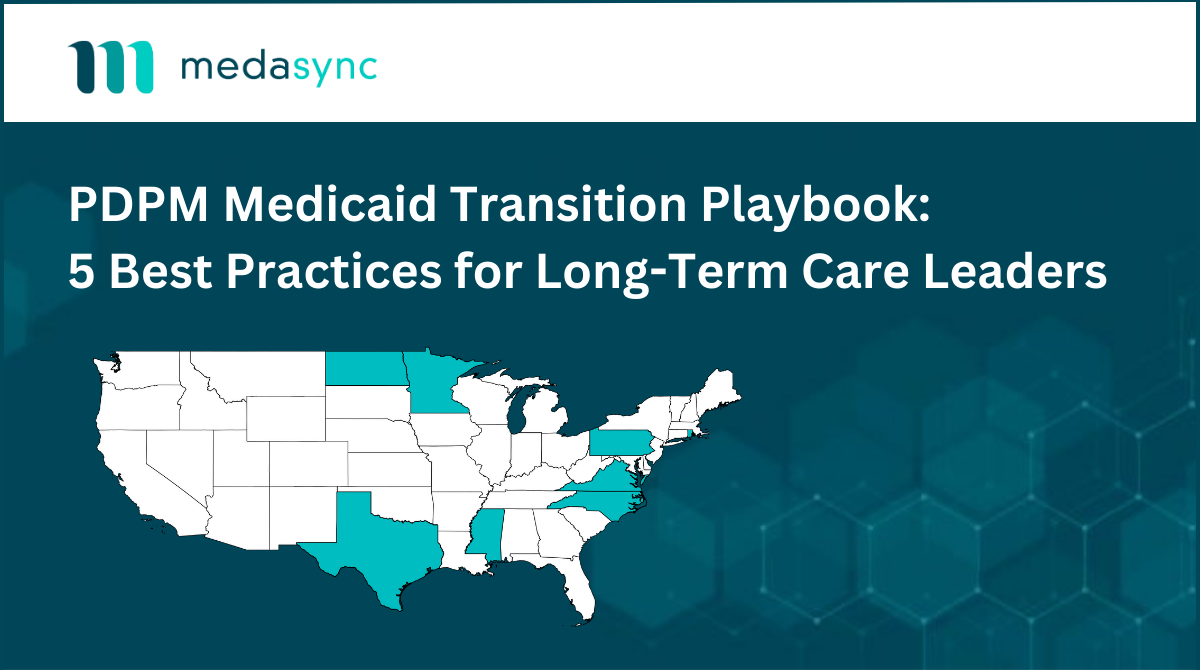Preparing for PDPM? Here Are 3 Steps You Can Take Right Now
New System, New Challenges
This October, the Patient-Driven Payment Model (PDPM) will go live — replacing the old RUG-IV system that’s been in place for more than two decades. We’ve all seen it coming, but as the new reimbursement model draws closer and closer, the pressure has begun to mount for many SNF operators nationwide who still haven’t been fully preparing for PDPM.
Not only is this because the system we’ve all known and operated under for 21 years is about to change completely, but it’s also because the new rules put SNFs in a tricky spot.
Whereas RUG-IV reimbursed SNFs for therapy minutes, PDPM focuses on classifying residents into specific categories according to condition and reimbursing SNFs according to those categories. And there are a lot of categories — 66 to be precise, with a whopping 28,800 possible combinations depending on the resident’s condition.
Let’s pause and review this key point: “resident condition.”
Under RUG-IV, you were reimbursed based on therapy minutes. And over time, you’d conduct periodic assessments at 15 days, 30 days, 60 days, and so on. Now, you have to have the new resident’s MDS completed upfront — within eight days of the patient arriving at your facility. This new Initial Assessment puts immense pressure on you to get a complete picture of the resident quickly to secure the maximum rate possible, though you previously had plenty of time to get that information.
So, the bottom line: you have eight days to find the patient’s primary diagnosis if it’s missing, complete the assessment, and start treatment on the new resident — all while completing one-time IPAs for existing residents and navigating the administrative burdens of managed care. This is why preparing for PDPM has so many SNFs concerned about how they can make efforts now to prepare when their existing workload is so heavy.
Worried Yet?
If you are, it’s justified. Many SNFs aren’t fully prepared for PDPM, and even though we’ve had some time to prepare, it’s not just a new process that you have to implement. It’s a combination of new training, internal communications, procedures, software, and more.
With past changes, the best operators have learned that the key to any revenue cycle adjustment is an efficient pre-admission process. With the limited window PDPM gives between admission and the due date for the Initial Assessment, it’s clear that pre-admission is your best chance to optimize data collection to ensure the most complete Initial Assessment rate possible.
It’s the only chance you have to really get everything you need before the countdown begins. To help you make the most of this phase, we’ve prepared a few recommendations that should give you a head start — but you have to start now!
1. Understand the Resident’s Full Story
Your resident’s medical background will extend beyond his or her first eight days in your home. If you’re basing the resident’s Initial Assessment on the first 5 days in your home, you’re missing a lot. There could be past conditions that could be a component for PDPM such as signs of COPD or a swallowing disorder.
One place that may require additional attention is the historic H&P, behaviors, surgeries, medication list, and other data buried deep in the referral packet you get from the hospital. Paying close attention — especially to the later pages — will reveal clues as to your ability and requirements to treating (or not being able to treat) the patient today.
2. Get the Resident Referral Packet — ASAP
To do this, you’ll need a degree of hustle. Referral documents contain lots of the information you’ll need to code the initial MDS assessment. The sooner you have it, the sooner you can understand the resident, their condition(s), and your treatment strategy. This is key to preparing for PDPM because you’ll be in a stronger position to begin coding the Initial Assessment once the countdown begins.
How you obtain the admission packet depends on your staffing, the referring hospital, and so on. Assess what you get now and how you get it. Determine what hospitals currently share in the initial referral document versus what is provided in the discharge packet. Review it against the Initial Assessment to identify any PDPM data gaps such as the right surgical information to code the section J questions or a comprehensive listing of applicable NTAs.
3. Streamline Screening Documentation and Workflow
Review the content of your current screening documentation. Does it collect enough PDPM data points to help you make an appropriate admission decision? You can’t always afford to wait for the referral packet, so developing PDPM documentation will be a strategic advantage that helps you navigate the pre-admission process faster.
Also, consider the technology you’re using here. Is information stored on documents or spreadsheets (that may or may not be backed up)? Are you printing out forms that must be completed by hand and then scanned in? Are you using documentation that isn’t tailored to PDPM, doesn’t ask the right questions, and forces you to modify it by hand?
Make the Most Out of Preparing for PDPM
These are just a few recommendations for helping you make the most out of the pre-admission phase. In our latest white paper, we’ve developed five more designed to not only help you get the information to you to maximize revenue but also to help you streamline your processes and workflow across the board.
Download the white paper now, and get eight in-depth recommendations on preparing for PDPM through the pre-admission process.




